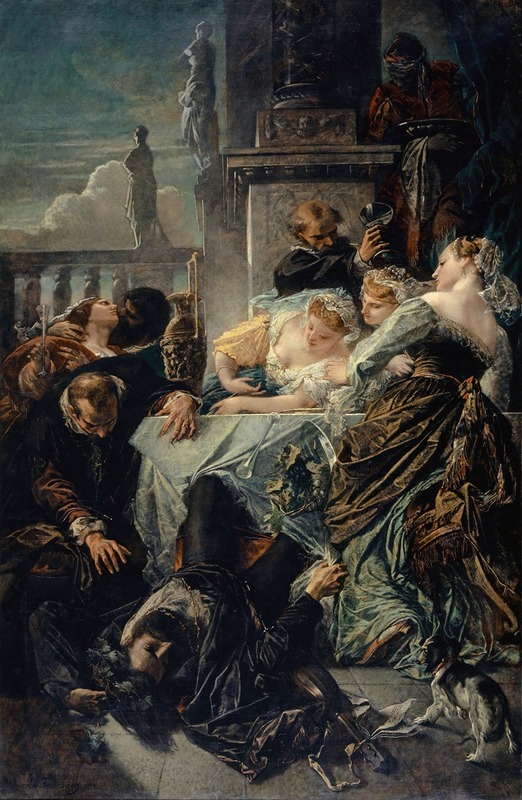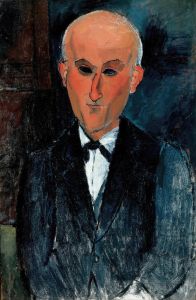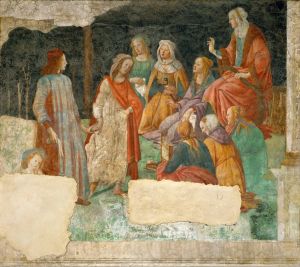
The Death Of Pietro Aretino
A hand-painted replica of Anselm Feuerbach’s masterpiece The Death Of Pietro Aretino, meticulously crafted by professional artists to capture the true essence of the original. Each piece is created with museum-quality canvas and rare mineral pigments, carefully painted by experienced artists with delicate brushstrokes and rich, layered colors to perfectly recreate the texture of the original artwork. Unlike machine-printed reproductions, this hand-painted version brings the painting to life, infused with the artist’s emotions and skill in every stroke. Whether for personal collection or home decoration, it instantly elevates the artistic atmosphere of any space.
Anselm Feuerbach's painting "The Death of Pietro Aretino" is a significant work that reflects the artist's engagement with historical and literary themes. Feuerbach, a German painter associated with the Düsseldorf school of painting, was known for his classical style and his interest in depicting scenes from history and mythology. This particular painting, completed in 1854, captures the dramatic and poignant moment of the death of Pietro Aretino, a prominent Italian author, playwright, and satirist of the Renaissance period.
Pietro Aretino (1492-1556) was a controversial figure in his time, known for his sharp wit and provocative writings. He was often referred to as the "scourge of princes" due to his fearless criticism of powerful figures. Aretino's works spanned various genres, including poetry, prose, and plays, and he was a significant influence on the literature of his time. His reputation as a satirist and his connections with notable artists and intellectuals of the Renaissance made him a fascinating subject for Feuerbach's painting.
Feuerbach's depiction of Aretino's death is characterized by its dramatic composition and attention to detail. The painting portrays Aretino on his deathbed, surrounded by a group of mourners. The somber mood is accentuated by the use of dark tones and the careful rendering of the figures' expressions, which convey a sense of grief and contemplation. Feuerbach's classical training is evident in the composition's balance and the anatomical precision of the figures.
The choice of subject matter reflects Feuerbach's interest in exploring themes of mortality and the human condition. By focusing on Aretino's death, Feuerbach not only captures a historical moment but also invites viewers to reflect on the legacy of a man who challenged societal norms and left a lasting impact on the literary world. The painting can be seen as a meditation on the power of words and the enduring influence of a writer's work beyond their lifetime.
Feuerbach's work was well-received in his time, and "The Death of Pietro Aretino" is considered one of his notable achievements. The painting exemplifies his ability to blend historical narrative with emotional depth, creating a work that resonates with viewers on multiple levels. It stands as a testament to Feuerbach's skill as a painter and his ability to engage with complex themes through his art.
Today, Anselm Feuerbach is remembered as one of the leading figures of 19th-century German painting, and his works continue to be studied and appreciated for their artistic and historical significance. "The Death of Pietro Aretino" remains an important piece in understanding Feuerbach's oeuvre and his contribution to the art world. The painting is housed in the collection of the Staatliche Kunsthalle Karlsruhe in Germany, where it continues to be accessible to the public and art scholars alike.














